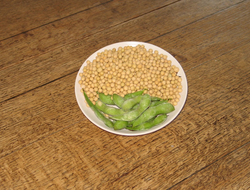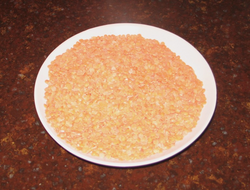Nitrogen: What does this element do for you?
Published: June 07, 2019
Nitrogen is an inorganic non-metal element identified by the chemical symbol N.
It is a component of the air that we breathe, and a major component of all plant and animal species.
Carbon, hydrogen and oxygen are the other three components common to all living things.
However, animals including humans, do not obtain the nitrogen that is essential for life from the air. Instead animals must obtain nitrogen from the food they consume.
The process by which nitrogen is made available to animals is known as the nitrogen cycle and requires the coexistence of microorganisms, plants, animals, and humans.
The nitrogen cycle
Living plants and animals require an organic form of nitrogen, but are unable to “fix” or incorporate inorganic nitrogen into a usable form.
However, several microorganisms such as rhizobium bacteria in soil, cyanobacteria in fresh water, and blue-green algae in sea water are able to use nitrogen gas (N2) and combine nitrogen with an organic molecule.
Glutamate, an amino acid common to bacteria, plants and animals, is an example of nitrogen fixing by bacteria.
The roots of plants, particularly soy and legumes, interface with soil bacteria and absorb organic forms of nitrogen from bacteria in a symbiotic relationship.
This provides bacteria with sugars and other nutrients from the plant. Plants incorporate nitrogen in to amino acids, proteins and non-protein molecules.
These plants are consumed by animals and humans. Humans also consume animal products which have been fed nitrogen containing plants.
A similar process occurs in water environments with water plants and marine animals.
When plants and animals die and undergo degradation nitrogen is released back into the soil to be recycled.
Function
Nitrogen accounts for about 3% of your body weight.
For comparison oxygen (65%), carbon (18%), hydrogen (10%), calcium (1.5%), phosphorus (1.0%) and other minerals such as potassium, sulfur, sodium, chloride, and magnesium contribute less than 0.5% of your body weight.
Within your body nitrogen is re-organised into molecules that your body requires.
For instance, amino acids synthesise the hundreds of proteins and a variety of non-protein nitrogen containing molecules necessary for human metabolism.
References
1.
Whitney, E. & Rady Rolfes, S. (2005). Understanding Nutrition. Belmont, CA: Thomson Wadsworth
2.
Gropper, S.S., Smith, J.L. & Groff, J.L. (2005). Advanced Nutrition and Human Metabolism (4thEd.). Belmont, CA: Thomson Wadsworth.
3.
Horton et al. (2002). Principles of Biochemistry (3rd Ed.). Upper Saddle River, NJ. Prentice Hall
4.
Carlson, T. H.Laboratory data in Nutrition assessment. In Mann. K. & Escott-Stump, S. (Eds.)(2004). Krause's Food, Nutrition & Diet Therapy. (11th Ed.) Elsevier
5.
Ettinger, S, Macronutrients: Carbohydrate, proteins and lipids. In Mann. K. & Escott-Stump, S. (Eds.)(2004). Krause's Food, Nutrition & Diet Therapy. (11th Ed.) Elsevier
6.
Krummel, D.A. Medical Nutrition therapy in cardiovascular disease. In Mann. K. & Escott-Stump, S. (Eds.)(2004). Krause's Food, Nutrition & Diet Therapy. (11th Ed.) Elsevier
7.
Eldridge, B. Medical Nutrition therapy for cancer prevention, treatment and recovery. In Mann. K. & Escott-Stump, S. (Eds.)(2004). Krause's Food, Nutrition & Diet Therapy. (11th Ed.) Elsevier


